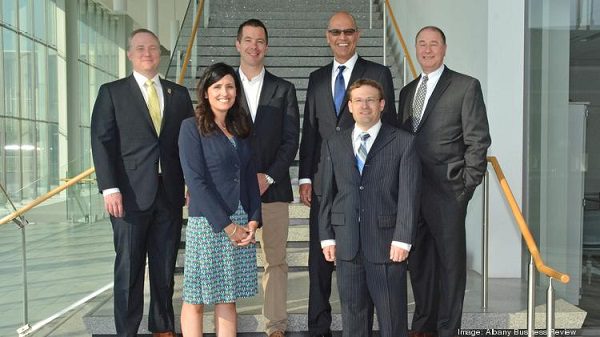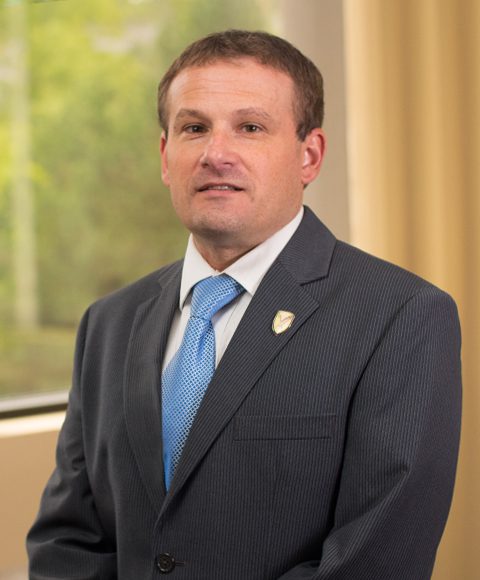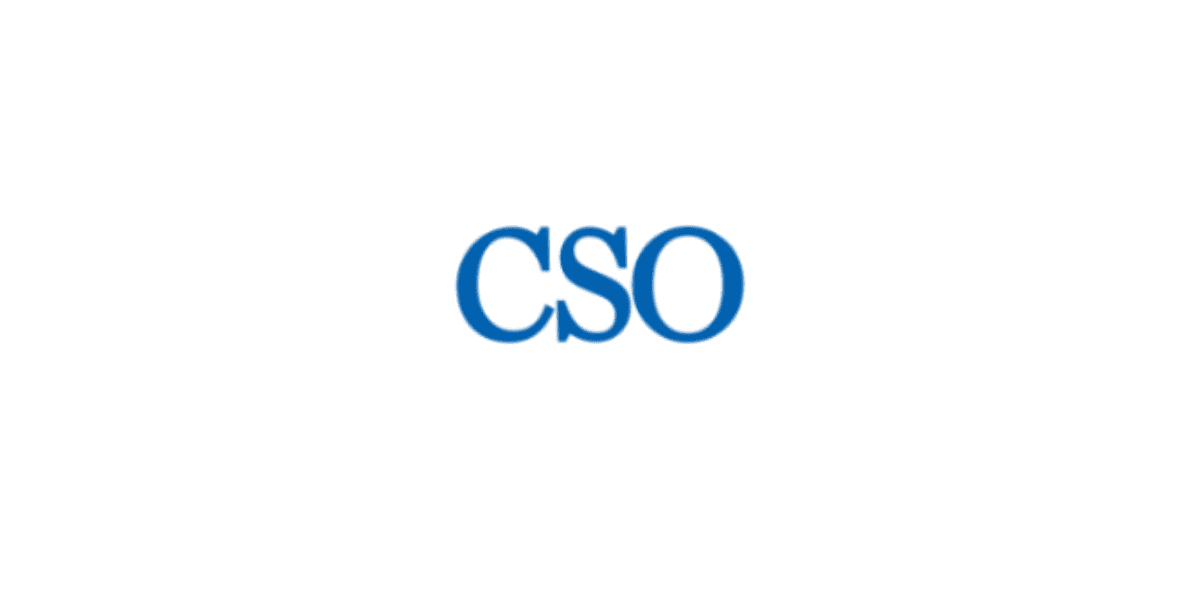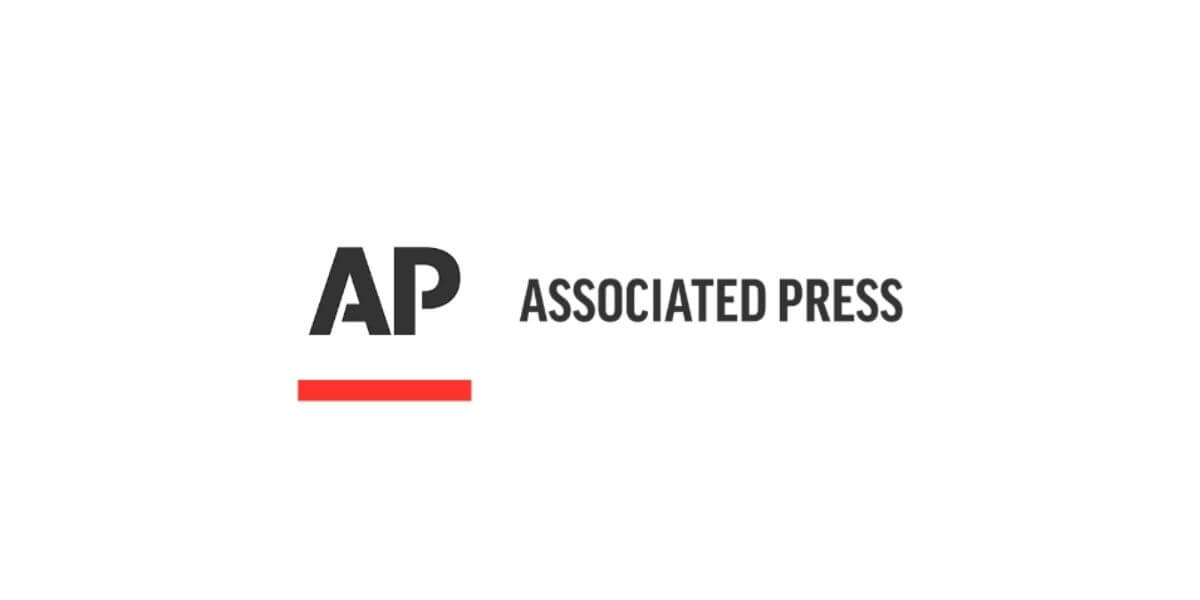Tully Rinckey Receives Recognition for Growth and Expansion
 What are your revenue expectations? What are the biggest challenges to staying on top of growth? In what ways has the Albany area helped or hurt your company’s growth?
What are your revenue expectations? What are the biggest challenges to staying on top of growth? In what ways has the Albany area helped or hurt your company’s growth?
Law firm Hodgson Russ and Albany Business Review recently convened a panel of six leaders of fastest growing companies at the Massry Center for Business at the University at Albany to answer these questions and others. Michael DeMasi, senior reporter at the Albany Business Review, moderated the discussion.
How much has your company grown in revenue and employees over the past five years and was this straight-line growth or up and down?
Brian Whitt, chief operating officer at DWM Facilities Maintenance: We’ve been in business since 1997. We were founded by David Meeks and he kind of grew the company to a point where we were pretty plateaued, pretty flatlined. And then 2008 happened and retailers stopped fixing things. The recession hit us quite hard and we contracted by a great margin. So when ‘09, ‘10 started happening, when we started to see some recovery — really ‘09 was very flat, ‘10 we could start to see it on the horizon that things would get better — we started planning for growth. We’ve been pretty straight as far as trying to take that sustained growth. And the employees have increased pretty much at that margin as well.
Girish Bhatia, CEO of GCOM Software Inc.: I would say we’ve more than doubled in the last five years. Five years back, we were at 27, 28 million a year. Last year we were over 60 million. And we grew pretty consistently, anywhere from 15 to 22, 23 percent. It’s never a flat year. In our type of business, once you stop growing, you have big problems. So to continue our trajectory on the 15, 20 percent, we started expanding outside. We’re a New York State company. In 2008, when things went bad, we went to the city to continue growth. Now we’re in Boston, Massachusetts and Florida doing the same thing we did.
Terry Nawrot, chief operating officer of Informz Inc.: Over the last five years, we’ve definitely been on a 11 straight-line pattern of about 15 to 20 percent each year. And, over the last five years, it’s been about an 85 percent increase in revenues. And same for employees; about five years ago we were around 57, and now we’re approaching the 100 mark.
Alan Okun, CEO of OrthoNY: We’ve grown also about 100 percent, or doubled in the last five years. A little bit different in terms of, it’s been more merger and acquisition. In January of 2013, we merged with Orthopedic Associates of Saratoga and Northeast Ortho, so that brought us an entirely “new market.
Greg T. Rinckey, founding partner at Tully Rinckey PLLC: Tully Rinckey has had straight-line growth in the past five years. We’ve opened five offices since 2012, including Rochester, Syracuse, Buffalo, Binghamton, and San Diego. In the last five years, the number of employees has grown by 63 percent. Our revenue has more than doubled. We’ve really tried to add additional practice areas as we continue to grow, and that’s really been fueling our growth.
Chris Covell, president of SmartWatt Energy Inc.: Over the last five years, we’ve also just about doubled. It has not been straight-line. There have been two years since the company started where we had flat years, 2009 was one and 2015 was the other. In subsequent years to those flat years — back in 2010, it was a very robust growth year, and we envision 2016 is going to be a very robust growth year for us. We’ve grown. Our employees probably have doubled in that same period of time as well.
What were some of the biggest challenges in staying on top of this growth and shepherding your employees through the company?
Nawrot: Well, I think with a lot of change – or with a lot of growth comes a lot of change. And you have to add management layers in there, you have to change job responsibilities, even restructure teams. And so for us, I think some of those challenges are all the changes. We’re very transparent with our employees and what we’re doing. Obviously, you can’t involve everyone in all of the decision-making, but we definitely try to make sure that we were communicating out all the changes as they were happening.
Bhatia: A big factor for growth, the challenges are winning a new customer. It’s so easy to maintain a current customer. To grow, you have to find new clients. And new client acquisition, that’s very tough, especially in the public sector which is where we are. The focus in the public sector is risk mitigation. Nobody wants to try it, so they seem to not take any chances.
Okun: In our case, because of the mergers and acquisitions, it was a challenge in a number of different ways. The one thing that was really good was that all three of the groups that came together shared the same philosophy of patient care and the quality of care and access for the patients and things like that. So that foundation was always there. The problem came in before 2013, we didn’t have a professional director of HR. So we had probably at that time, before we merged, maybe 100 employees, and we were getting away without it. Then all of a sudden, we’re up to 150, 160, and it’s like, how are we going to manage that and make sure we’re doing things legally and professionally with our staff?
Covell: One of the challenges is the lack of having standardized work processes as we grew from where we were in 2009 to where we are today. We started a lot of offices. We certainly had a lot of best practices, but we never took the time back in 2009 to document them and really create a quality management system.
Rinckey: I think what was most important to us in managing our growth was development of systems and what we call standard operating procedures so that something that is done in Albany, the way we do business, is the same way we do business out in San Diego. We also tried to manage kind of centrally, where we send out a managing partner from Albany to one of the branches to manage, and that failed miserably. So we very quickly changed gears, and now we have a planning [managing] partner in each one of the offices, so there’s management at each one of the offices. Communication is key and change is key.
Can you explain why the original strategy of sending managers out to the different offices didn’t work?
Rinckey: Because he was basically running from fire to fire. He wasn’t as invested in each one of the offices. When you have a managing partner in each one of the offices, they’re held accountable for their office.
Okun: We had exactly the same issue. So we now have just instituted site operation managers, and it’s made a dramatic change.
Whitt: The struggle is how do you grow and get systems in place that allow you to manage the growth without losing what made you special in the beginning. That has to do with getting the right people in the right places … We have our project managers that travel, and some are based in other places. But the only office we currently have is the Latham office.
To what extent, if any, did you hire consultants or outside professionals for advice and counsel on how to manage your growth?
Rinckey: First, we tried to do it on our own and quickly realized that that was not going to work. We hired law firm management consultants.
Was there any hesitancy before you took that step? Were you guys going, ‘Oh, we can figure this out. We don’t need to pay someone to tell us how to do it.’
Rinckey: Yeah. Especially when we got the proposals of how much it was going to cost. But in hindsight, it was definitely money well spent.
Nawrot: We did as well. We worked with Shaun Mahoney of Mahoney Performance Institute. Just from a leadership perspective, going through all the changes, we really needed someone to help assist us. And we worked with Lorraine Ferguson of Direct Impact, and she helped us really develop that sales team. And I’d agree, it was a good decision.
Whitt: I don’t know that we hired consultants. We subcontracted with Fingerpaint Marketing to do a rebrand for us. As far as strategy and leadership, that’s what I’ve been tasked with. Yes, there was a lot of hesitancy, and yes, the price tag was substantial, but it’s been a great investment.
Bhatia: No consultants hired ever. Ever. It’s been all internal, although I’ve been thinking about it. Yes, we’re growing pretty good. But am I missing something? We want to be in San Francisco and Florida and Massachusetts. So we hired some local talent there to see how to work different markets.
Covell: Over the last year or two, we’ve really started to leverage [using consultants], because we felt we were missing something. Shaun Mahoney is somebody that I’ve worked with. Currently, we’re actively engaged with a marketing firm out of California to do a rebrand.
Okun: We didn’t have to [rebrand to OrthoNY] that on our own, I can tell you that. We did use someone to help us figure out what kind of merger model we should use, or acquisition model. The branding part of it was trying to make you all understand who we are as an organization. It had an extremely high price tag. We did it all internally.
The term culture has come up a few times. If you could, give me one or two words that you think summarize what your company culture is or represents.
Nawrot: Fun, we’re friendly, we’re very open. But it wasn’t always a great culture. A few years ago was the turning point for us. It was around making sure that we keep the great people we have and also work on getting rid of people that weren’t on board with the company direction and vision. We include our employees in our [Strengths, Weaknesses Opportunities, Threats] analysis every year. Joe and I do the two-on-one meetings, so we get a chance to sit down and listen to each employee.
Can I ask you how you try to encourage the employee to be open and frank about their thoughts? I would think the employee is thinking, ‘I shouldn’t say the wrong thing here.’
Nawrot: In the first year, we weren’t sure if we were going to get a lot of open information from people. And we made it very clear what we were doing with the information. We also made it very clear that their name wasn’t shared with their manager. And people were really honest … The first year we did it, we heard a lot of the same people. That’s when we knew we had problems with certain people. And those people are no longer with us. On the very first day a new employee starts, Joe and I sit down with them. We’ve evolved our on-boarding process because of that. And we’ll also ask them just what’s their overall impression. When I say fun and friendly, that’s coming from them. But it takes time. It’s not something that just happens.
Bhatia: We jokingly say GCOM is like a very good Mafia. Once you join, you never leave. We choose employees very carefully. If they survive the first three months, they’ll be with us forever. People can come and talk to me any time. There’s a lot of drinking with employees. There’s no hierarchy when you’re out there. In that way, we solve a lot of problems.
You did an interview with the Business Review recently, and you said “We hire people who have no formal education in information technology but they do very well on our aptitude test.” I just find that fascinating in a company such as yours.
Bhatia: Programming requires very little previous education. If you have a good logical mind and the aptitude test shows that, then I can train them in Java in six months time … There are other jobs where I need six years experience. But the best output I got in the 10 years is the people who started as entry level.
What are some words that describe your company culture?
Whitt: All we deal with all the day long are problems. People don’t call us and say, hey, my outlet’s working great today. All my people deal with are problems. So our company culture is built around problem solving. Everything we do is to set up a culture that allows people to problem solve in the best way possible. So that means having a relaxed atmosphere in our office; that means bringing in breakfast every day for our people; having a monthly lunch where we talk about all the problems. And we have something that I never thought I would have: Employee of the month. It seems such a backwards way of doing things, but people really look forward to this stuff. And marketing had this idea to do, instead of gift certificates, which we’d always kind of handed out: “Here’s a gift certificate from one of our customers,” which is easy when you work for retailers. They had this idea that they would create David bucks. So our founder is David Meeks. They’re actual bills, they’re laminated things, they got a big picture of his face on this big Monopoly-looking bill. And these things go like hotcakes. It’s real money, right, because you can turn it in for gift certificates. So people love them. It’s a great little management tool.
Rinckey: A couple words about our firm is “mission first, people always” is our culture. And we deal a lot with people that are in distress. People are coming to us a lot of times at their worst in their lives. They’ve been charged with a crime; they’re going through a divorce; they’re going through a bankruptcy. So they’re coming in and dumping their problems on either my attorneys or on our support staff. A lot of times they’re very emotional, and it’s very difficult to deal with. So it’s a very stressful environment. The culture within the firm is, you have to understand your bedside manner when you’re talking to these clients. So it’s very stressful. So how do we deal with that? We deal with that by having a lot of fun events. Tully Rinckey sponsors a lot of employee events. The other thing we do is we do blind surveys for our team. We send out a survey, you don’t put your name on it, you can fill it out electronically or, if you’re paranoid and think we can track it, you can go to a scanner and scan it in. We found those to be very helpful in that people are truthful.
Covell: We encourage our employees to ask themselves the question: do you love what you do, where you do it and who you do it with? And if they don’t confidently say yes to that, we encourage them to bring it to HR, bring it to their manager, and have the conversation. Ultimately, we want to have team members who are passionate about what they do and really show up to work with that energy. Having that dialogue is valuable for that employee and the management team.
Okun: We don’t save lives, we safe lifestyles in orthopedics. So we want to get the shoulder back; we want people to get back onto the football field; we want people to be able to do the gardening they’ve always been able to do. So saving lifestyles really captures that very well. So that really is how we try to get everyone working in the same direction and that’s kind of driving the culture. It’s very challenging, though, again, having three different regions with people having different ways to celebrate, and people managing differently and all that.
So it’s been quite a challenge culturally to bring all these groups together. And we have found that having the site managers makes a big difference, because they can celebrate the way they want in their region. Let people enjoy what they’ve got and get back to where they were before the mergers. There was a lot of angst because it’s such a big change. So we’re trying to save lifestyles, not only for our patients, but also internally as well.
The Albany region is known for a steady-as-she-goes business climate, not for aggressive growth. In what ways has this either helped or hurt your company, or has it had any impact at all on the pace and extent to which you’ve grown?
Covell: We do more work outside the region than within the region, so it’s not that significant a consideration for us. The bigger piece is getting experienced staff actually to relocate here has been a conversation, and we’ve failed at times. Ideally, a lot of our senior managers, I’d like to have them close to me, to have a senior management team that resides largely here in Albany. We’ve had to compromise on that. We certainly have a pretty good geographic spread with that senior management team. We’ve been unsuccessful getting people to come to the cold climate in upstate New York. It’s probably one of the biggest disadvantages of being in the area. But there’s many advantages. And we are certainly happy and proud to call Albany home.
Rinckey: With technology now, we don’t really see it as an issue, because a lot of our clients we can service via video teleconference. We have clients all around the country and all around the world. Where Albany has actually helped us is it serves kind of as our back office. It’s where our finance department is, our marketing department. So we have a lot of our back office support here that supports a lot of the other offices that 67 are growing. And the cost of living is Albany is a lot lower than Washington, DC, so it’s helped our growth.
Nawrot: I don’t think it has really hindered our growth as well. I think we’re a national and international organization. We have clients all over the world, and we do have folks everywhere. You know, I think from a hiring perspective, for some of our technical roles, we’ve had some issues trying to find people to be in our office in Saratoga. So we have looked outside of the region for some of those types of roles. And we do have about 30 of our development team everywhere, all over the United States.
Is there a hump you have to get over as far as bringing someone to Albany?
Okun: There is. We’re fortunate to have Albany Medical here. So what generally brings people to the community is that they have some tie with the community. Either their wife’s family is here, which has been an attraction, or they graduated from Albany Med, went off for their fellowship and their training, and then came back to the Albany area. So we have found that, for the most part, I would say of the 38 physicians that we have, most of them have had some tie to the community. But I’m happy to say that, of all those people we’ve recruited, not one has ever left the community. It’s worked out very well.
So let’s talk about financing. Some lenders are hesitant to back fast-growing firms because they’re concerned with how they’ll sustain growth and/or are they taking on too much too soon. What has your experience been dealing with lenders?
Covell: We’ve been fortunate to have a strong relationship with our banking contact. I think in our experience, we’ve had two banks that we’ve worked with in our company’s history, and with those two, we understand the person you have the relationship with is more important than the bank itself. We’ve been very fortunate to have someone very strong and really advocate for us. I don’t know that we’ve ever had a need that didn’t get filled.
Bhatia: Lending involvement is real tough. Banks just do not understand the software. There’s the project and work is going on for 12 to 18 months, and then you get paid. They understand construction. Software is so intangible. It’s very hard trying to explain to the bank this work in progress has real value. So to get money, you need money. You can’t just finance $20, $30 million. They make you sign everything: your house, your first-born.
Rinckey: Before 2008/2009 and the recession, the banks were just basically throwing money at us. After the recession, banks really retracted and we started having issues getting lending. The banks have come back to the table now and are competing for our business. Once again we have a strong relationship with a bank. But we learned a lesson from it is that you’ve got to have a strategic plan to show the bank where you’re going.
Nawrot: We haven’t had to borrow money. We’re 100 percent self-funded. Could that change down the road as we want to grow more? Potentially. But right now, it’s how we do that.
Whitt: We’re in the same boat in that we haven’t funded any of our growth with debt. It’s simply a cash flow credit line issue, which we do need at times.
How do you know the difference between real sustainable growth and getting caught in a market bubble that is about to pop? It’s one those sit-back-and-ponder questions.
Covell: Yeah, so I’m probably always paranoid that we’re in a bubble. And it’s always a good defense against it by diversifying our business geographically, vertically, the markets we’re pursuing, and then the service offering that we bring. So I would say we’re pretty diverse with our approach to the market right now.
Whitt: I guess a bubble is different than a full system-wide recession, right? Because we’ve gone through that and everyone got affected at some level. … If all my customers I felt like were overvalued, I’d feel like I was in trouble. But other than that, I’m not really sure how to determine that.
Bhatia: It’s such a hard thing to figure out. I don’t even attempt to figure it out. So I go on the profitable growth. If it’s a profitable growth, it can’t be a bubble.
Nawrot: Yeah, there’s a big question. We’re recurring revenue models, so 90 percent of our revenue is almost guaranteed. So we have to really make sure that we keep our high retention rate for our customers.
Okun: There’s not a health care bubble right now, but there is this tremendous change going on. We’re trying to, as other people have said, anticipate what is going to happen.
Rinckey: For us, I think diversification is really key. There are always going to be people who commit crimes, there’s always going to be divorce, there’s always going to be bankruptcies, but they’re going to go in cycles. We find most of our divorces happen right after Christmas. People try to hang in through the holidays. So we kind of know what the cycles are and we’re very diverse. And planning is very important.
We’ve just got a few minutes left, so maybe we’ll think of this as the lightning round. What are some lessons learned from your growth, and what do you advise leaders of other companies to do if they’re worried about the risks of growth?
Whitt: I would challenge anybody that didn’t think they needed to grow, what they’re doing in business. If you’re not growing in some way, you’re dying. Right? It’s organic. The change is inevitable. Change is going to happen. So you’re going to have to grow to stave off that risk, right?
Bhatia: I think the biggest problem that you can face is not having enough processes in place as we’re growing. So one of the things that happened, somebody had left GCOM and he continued to get paid for three months after. As important as the sales is to get more business, you need to be focused on creating enough systems to back up your growth.
Nawrot: I think the biggest thing is hiring great people and trying to keep those great people. It can be hard.
Okun: It’s a lot of the same things, but in a different way. You need a solid growth plan, a strategic plan as has been discussed. You need to work on that culture that we talked about. And then thirdly, you’ve just got to brace the organization for change. We have people who have been working for the organization for 30-plus years, and they come up to me and say, ‘Alan, it’s not the way it used to be.’ I say, well, you probably wouldn’t be working right now if you didn’t realize that.
Rinckey: I think it’s important to have a strategic plan. But it’s also important to realize that strategic plan, as soon as you implement it, you’re going to have to adapt it.
Covell: Mine is probably a combination of what a lot of you have already said. So it’s having a strategic plan, but then also a communication plan built off of that. I know that we’ve probably stressed people out because we pull people in directions, but we never really had a good formal plan of communicating to them why we’re doing it and what they should expect. Building a communication plan off the back end of that, you can really prepare the organization for the why and the what you’re going to do.






